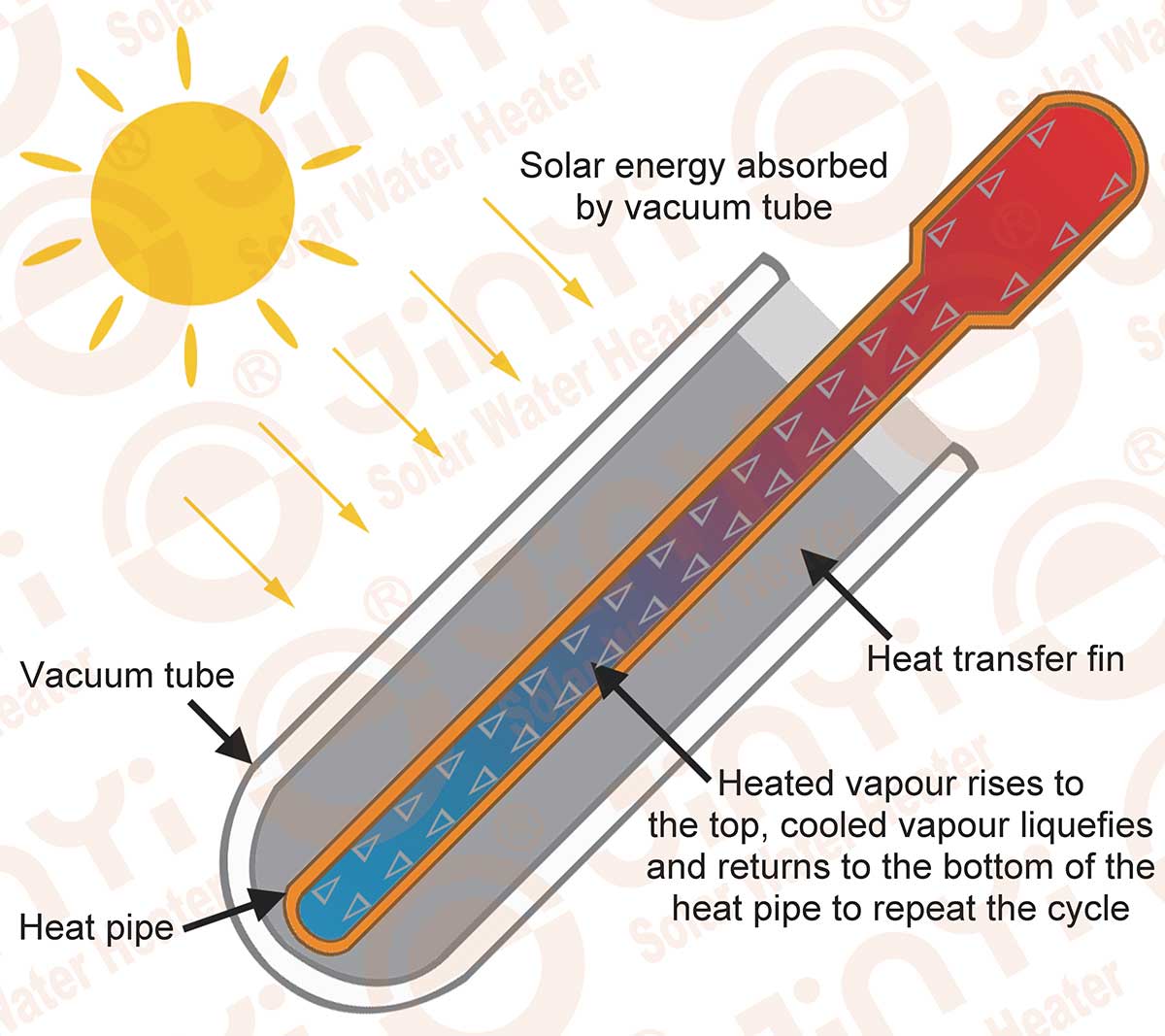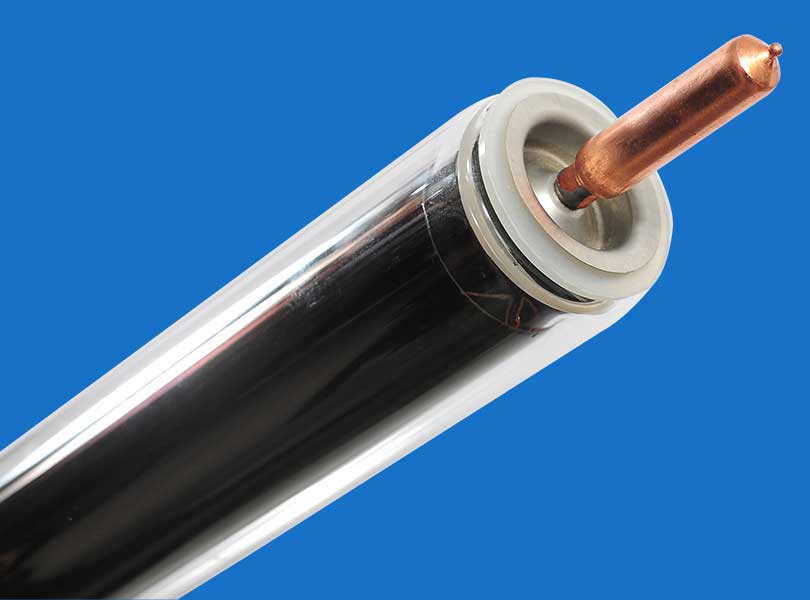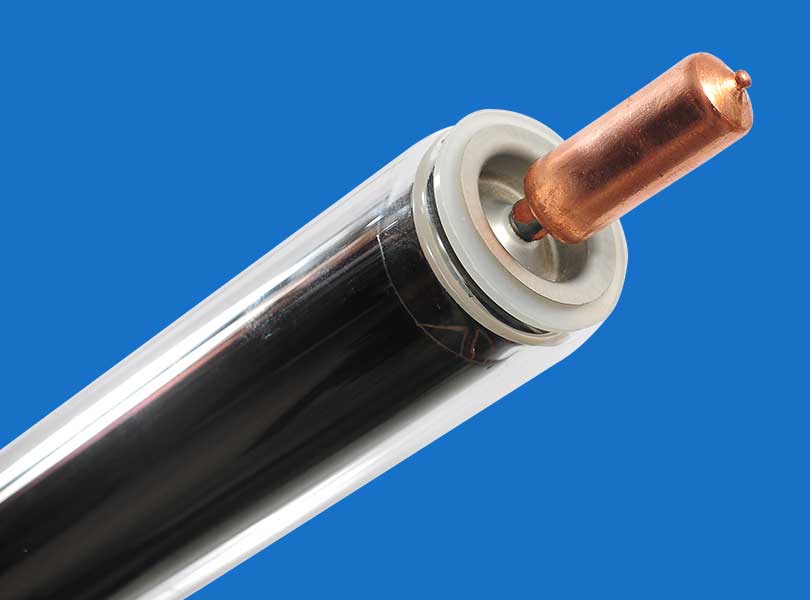
Heat-pipe Vacuum Tube
Heat pipe vacuum tube might seem like a new concept, but you are probably using them everyday and don't even know it. Laptop computers often using small heat pipes to conduct heat away from the CPU, and air-conditioning system commonly use heat pipes for heat conduction.
Heat pipe vcuum tube introduction
The heat pipe is hollow with the space inside evacuated, much the same as the solar tube. In this case insulation is not the goal, but rather to alter the state of the liquid inside. Inside the heat pipe is a small quantity of purified water and some special additives. At sea level water boils at 100℃, but if you climb to the top of a mountain the boiling temperature will be less that 100℃. This is due to the difference in air pressure.
Based on this principle of water boiling at a lower temperature with decreased air pressure, by evacuating the heat pipe, we can achieve the same result. The heat pipes used in solar collectors have a boiling point of only 30℃. So when the heat pipe is heated above 30℃ the water vaporizes. This vapour rapidly rises to the top of the heat pipe transferring heat. As the heat is lost at the condenser (top), the vapour condenses to form a liquid (water) and returns to the bottom of the heat pipe to once again repeat the process.
At room temperature the water forms a small ball, much like mercury does when poured out on a flat surface at room temperature. When the heat pipe is shaken, the ball of water can be heard rattling inside. Although it is just water, it sounds like a piece of metal rattling inside.
This explanation makes heat pipes sound very simple. A hollow copper pipe with a little bit of water inside, and the air sucked out! Correct, but in order to achieve this result more than 20 manufacturing procedures are required and with strict quality control.


Structure and Principle Heat-pipe vacuum tube
Heat pipe evacuated tube Quality Control
Material quality and cleaning is extremely important to the creation of a good quality heat pipe. If there are any impurities inside the heat pipe it will effect the performance. The purity of the copper itself must also be very high, containing only trace amounts of oxygen and other elements. If the copper contains too much oxygen or other elements, they will leach out into the vacuum forming a pocket of air in the top of the heat pipe. This has the effect of moving the heat pipe's hottest point (of the heat condenser end) downward away from the condenser. This is obviously detrimental to performance, hence the need to use only very high purity copper.
The heat pipe used in JINYI solar collectors comprises two copper components, the shaft and the condenser. Prior to evacuation, the condenser is brazed to the shaft. Note that the condenser has a much larger diameter than the shaft, this is to provide a large surface area over which heat transfer to the header can occur. The copper used is oxygen free copper, thus ensuring excellent life span and performance.
Each heat pipe is tested for heat transfer performance and exposed to 300℃ temperatures prior to being approved for use. For this reason the copper heat pipes are relatively soft. Heat pipes that are very stiff have not been exposed to such stringent quality testing, and may form an air pocket in the top over time, thus greatly reducing heat transfer performance.
Heat pipe evacuated tube Freeze Protection
Even though the heat pipe is a vacuum and the boiling point has been reduced to only 25-30℃, the freezing point is still the same as water at sea level, 0℃. Because the heat pipe is located within the evacuated glass tube, brief overnight temperatures as low as -40℃ will not cause the heat pipe to freeze. Flat-plate collector will be damaged by repeated freezing. The water used in heat pipes still freezes in cold conditions, but it freezes in a controlled way that does not cause swelling of the copper pipe.
Last: Three-target Vacuum Tube
Next: no





